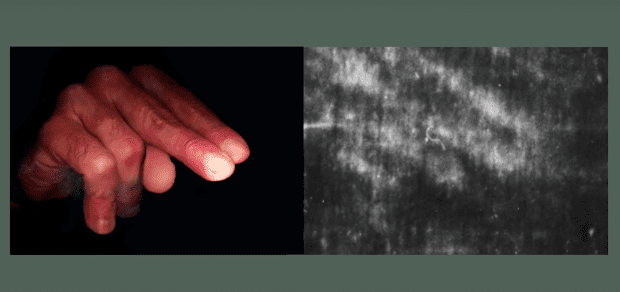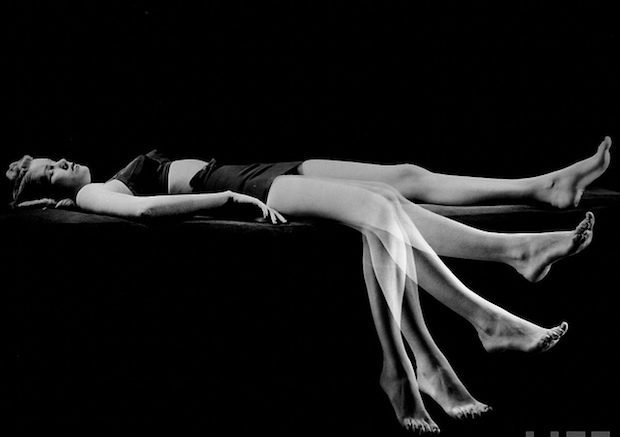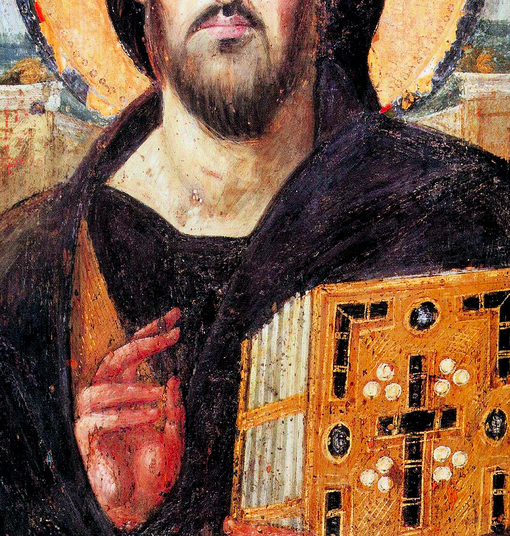The Shroud’s Oscillating Man

Here’s something completely different for the hive mind to consider. It just came to my attention this morning, and I’m trying to get a read on it.
A friend passed on this 50-minute documentary about “new findings” on the Shroud of Turin. The documentary is from 2008, it appears; I haven’t been able to find any follow-up on these supposed new findings, so I don’t know if they’ve been disproved or validated.
In short, the documentary, based on the work of scientists in Sicily, claims to have made new discoveries about the Shroud based on “photogrammetry” — the science of making distance measurements of surfaces depicted on photographs. Using this technique, and high-resolution imagery, the scientists say they’ve found a number of objects on the body of the man in the Shroud — including, remarkably, tefillin, small leather boxes containing Scripture passages that observant Orthodox Jews wear strapped to their left arm and to their heads while praying.
Even more interesting, the scientists claim that their study has shown that the image on the Shroud is not static, but actually depicts a slight oscillation. It is, they say, like stroboscopic photograph, showing slight movement of the figure as intense bursts of energy emanate from his body. Here’s an example of a modern professionally taken stroboscopic photograph:

The movement within the Shroud image, it is claimed, is much more restricted, but still visible. If the image is in fact a glimpse of the moment of Christ’s Resurrection, then it is more like a kind of video of the first seconds of the Resurrection, depicting an oscillating movement of Christ.
See the image at the very top of this post? It depicts the right hand of the Shroud Man. But this imaging technique also shows the same hand in a semi-clenched fist. If the scientists’ theory is correct, and if the image really is Jesus of Nazareth at the moment of Resurrection, then the first thing Jesus did with his hand after returning to life was to make the hand configuration very similar to that Orthodox priests use when they bless — a hand position of great antiquity, derived in part from Greco-Roman hand gestures signifying particular meaning. Here is a detail of the famous 6th century icon of Christ Pantocrator at the Monastery of St. Catherine on Mount Sinai:

The documentary does not point this out, perhaps because the scientists are Roman Catholic, and didn’t recognize the significance. It is also possible that the Shroud Man’s hand moved to that position as a sheer coincidence. But it is exciting to consider the possibility that the Shroud Man, if he is the Resurrected Christ, made, as his immediate first act after life returned to his body, a gesture of holy blessing.
Now, my skepticism of this documentary is twofold. One, in my (admittedly limited) search, I haven’t been able to find anything reproducing these results, or even analyzing them independently. Maybe you readers can point me to something. Second, in watching the video, I cannot see in most cases the images that the scientists claim is visible. It is certainly possible that the documentary can’t recreate the same detail visible with instruments. It is also likely that an untrained eye can’t see what trained eyes can see. But part of me wonders to what extent people are seeing what they want to see.
Cards on the table: I do believe that the Shroud of Turin was the burial cloth of Jesus Christ. Having said that, I don’t want to be quick to accept the findings of these scientists. So, I’m appealing to the wide readership of this blog for guidance.

Subscribe for as little as $5/mo to start commenting on Rod’s blog.